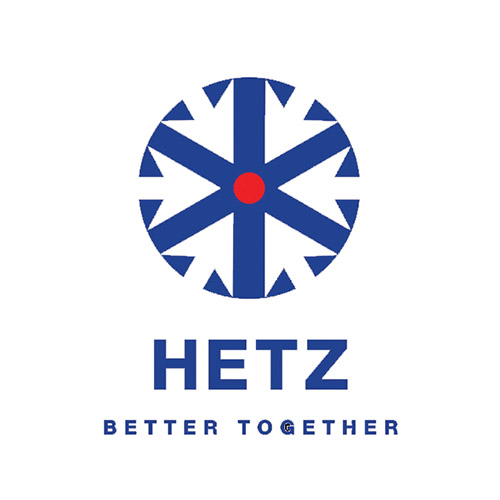
The meaning and potential impact of HETZ (Hebrew for arrow) took on new meaning following the organization’s Teaneck parlor meeting on December 8. Less than 24 hours later, the sorrowful reality of anti-Semitism and Jew hatred reared its ugly head again, in our own backyard.
Have you ever attended a parlor meeting in which the objective was not necessarily for you to leave a check before you left? Have you ever experienced an organization that prides itself on being a global grassroots organization that specifically prohibits shifting your charitable donations to them if it shorts your contributions to other(s) of your charity recipients? One person cited the idea of the Jewish “edifice complex,” down-playing the characteristic donor recognition model and up-talking participation and action as highly desirable attributes, notwithstanding the ongoing need for financial support as well.
In his opening remarks, and flanked by the organization’s founder, the CEO of HETZ asked those assembled a few pointed questions about the recent crescendo of anti-Semitism worldwide. And then he waited while each person around the table gave an answer. He continued with a summary of the history of anti-Semitism that preceded and followed World War II, until today. The founder opined his own revision of terms, proposing that “anti-Semitism” (as in “neo-Nazi”) be replaced by the more currently accurate term of “Jew hatred,” and both men requested anonymity for the purpose of this article.
The mission of HETZ is to employ sources of connectivity between people, NGOs (non-governmental organizations), corporations, government agencies and personnel, “creating a powerful synergistic and effective ecosystem for fighting anti-Semitism and advocating for Israel.” The idea, explained the CEO, is to “build a task force that will bring volunteers and activists together to combat anti-Semitism.”
So why all the secrecy? Most of the Jewish population is aware that anti-Semitism is on the rise locally, on college campuses, in Europe and worldwide. And there are numerous organizations in place working to fight it. This, said the CEO, is the challenge of having numerous but relatively small groups working independently and less effectively, duplicating efforts, and thus making but a trivial impact. However, the flourishing anti-Semitic, anti-Israel and anti-Jewish campaigns have taken a much greater foothold because the propaganda is funded largely by few sources and a well-oiled machine that is decades old with a trail of success and efficacy. It seems, therefore, that minimizing individual social media exposure and maximizing the totality of the HETZ global effect has greater potential for the desired outcomes.
The CEO noted that the long-running anti-Israel campaign has created and nurtured not only a receptive audience that grows every day, but a plethora of activists to carry out its manifesto along with a huge platform of social media foot soldiers to fuel the flames.
The rebuttal has been too long in coming, miniscule and highly ineffective.
Effective and powerful collaboration, says the HETZ promotional video, allows HETZ to “respond faster and hit harder.” The CEO cited, as a case in point, that HETZ has already established—in its short history—collaborative participation from thousands of individuals and numerous heads of corporations around the world. Because of the power, speed and ease of access of social media, communication within the HETZ circle of members is swift. The collaborative work groups are strategically structured and based in sharing best practices amongst themselves and with other groups. Plans can be shared easily and expediently. As goals are created or as needs arise, these work groups engage the expertise of both social media experts and pertinent activists “on the ground” to effect action in both arenas: the promotion of Israel in general, of Israeli business, technology and products, and in the intervention in anti-Semitic propaganda or actions, or to abort other detrimental attempts that are discovered, for example, by the expert watch-dog functions of CAMERA or of the IAC (Israel American Council).
It was this sort of collaboration that recently forced Fatah to take down its Facebook platform and remove the anti-Semitic content, not once, but twice.
HETZ had also mentioned a West Coast American university known for student BDS activity as being a recipient of 11 billion dollars of funding (yes, you read correctly) since 2012 by Qatar, the United Arab Emirates and Saudi Arabia. The discovery clearly indicated involvement of faculty behind the scenes, which then filtered activity and materials down to the students.
A HETZ member affiliate, ACTIL, is 22,000 activist members strong, and HETZ urges everyone to become one of them. Everyone has something to contribute, and that’s what is different about HETZ. They also work with the ICC, International Criminal Court, where a collaboration was formed between “My Truth,” with the soldiers on the ground and The International Forum, to respond to alleged crimes committed against the Palestinian people by Israel.
While HETZ does require operating funds, of course, they believe the power is in the people. Working together as a global “ecosystem” advocating for Israel in general has the highest potential to strengthen the country and begin to dissolve the machine of anti-Semitism that has become so pervasive.
HETZ seeks NGOs (non-governmental organizations) that are not huge, that are financially “hungry, but not starving,” with substantiated effective leadership that talks/works with others cohesively and collaboratively as a team. “Better Together.”
If you are interested in joining or can connect HETZ with such people or organizations that might like to get involved, contact HETZ: www.thehetz.org.
By Ellie Wolf










